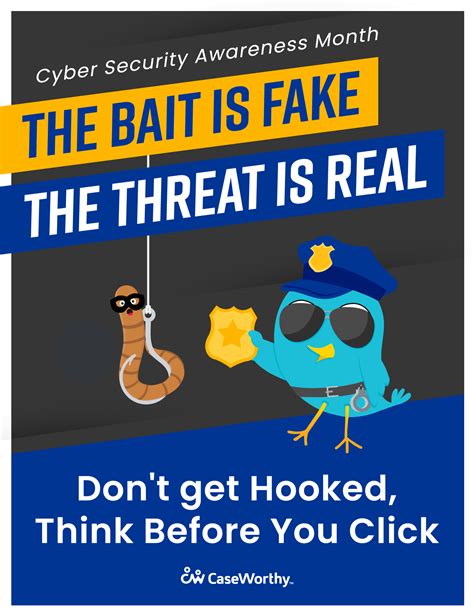
Unsubscribing from unwanted emails can expose individuals to phishing scams, cybersecurity experts warn, as malicious actors increasingly exploit the unsubscribe function to harvest sensitive information. Clicking the “unsubscribe” link in suspicious emails can inadvertently confirm the validity of an email address to spammers, making recipients more vulnerable to targeted phishing attacks and malware distribution.
The Anti-Phishing Working Group (APWG) reports a surge in phishing campaigns utilizing deceptive unsubscribe mechanisms. According to the APWG’s latest trends report, “Phishers are increasingly using unsubscribe links to verify email addresses and target individuals with more sophisticated attacks.” This tactic allows scammers to identify active email accounts, increasing the likelihood of successful phishing attempts.
“Many people assume that unsubscribing from an email list will stop unwanted messages,” explains cybersecurity analyst Emily Carter. “However, if the email is a phishing attempt, clicking the unsubscribe link could flag your email address as active, leading to a flood of further scams.”
The danger lies in the sophistication of modern phishing techniques, which often mimic legitimate unsubscribe processes. These deceptive emails can appear to originate from reputable companies or organizations, making it difficult for users to distinguish between genuine and malicious communications. Once an individual clicks on a phishing unsubscribe link, they may be redirected to a fake website designed to steal personal data, such as usernames, passwords, credit card details, or social security numbers.
The Federal Trade Commission (FTC) advises consumers to exercise caution when dealing with unsolicited emails. “Always be wary of emails from unknown senders, especially those requesting personal information or directing you to click on links,” states an FTC advisory. “Instead of clicking on the unsubscribe link, manually block the sender or mark the email as spam.”
Experts recommend several proactive measures to mitigate the risk of falling victim to unsubscribe phishing scams. These include scrutinizing the sender’s email address for inconsistencies, avoiding clicking on links in suspicious emails, and using a reputable spam filter to block unwanted messages. Additionally, users should regularly update their security software and educate themselves about the latest phishing tactics.
The Mechanics of Unsubscribe Phishing
Unsubscribe phishing operates on the principle of exploiting the trust users place in the unsubscribe function. Legitimate email marketing campaigns are legally required to provide an unsubscribe option, allowing recipients to opt out of future communications. Scammers capitalize on this expectation by creating fake unsubscribe links that lead to malicious websites or trigger the installation of malware.
The process typically unfolds as follows:
- Spoofed Email: The victim receives an unsolicited email that appears to be from a legitimate source, such as a well-known retailer, bank, or social media platform. The email often contains enticing offers, urgent warnings, or alarming account notifications designed to provoke a response.
- Deceptive Unsubscribe Link: The email includes an “unsubscribe” link, which is presented as a convenient way to stop receiving future messages. However, this link is actually a carefully disguised URL that redirects the user to a phishing website.
- Data Harvesting: The phishing website mimics the appearance of a legitimate website and prompts the user to enter personal information, such as their email address, password, credit card details, or social security number. This information is then harvested by the scammers for identity theft, financial fraud, or other malicious purposes.
- Malware Installation: In some cases, clicking on the unsubscribe link may directly trigger the download and installation of malware onto the victim’s computer or mobile device. This malware can steal sensitive data, track online activity, or encrypt files for ransom.
- Confirmation of Active Email Address: Even if the victim does not enter any personal information on the phishing website, simply clicking on the unsubscribe link confirms to the scammers that the email address is active and in use. This makes the victim a more valuable target for future phishing attacks.
Identifying Phishing Emails: Red Flags to Watch For
Distinguishing between legitimate and malicious emails can be challenging, but several red flags can help users identify potential phishing attempts:
- Suspicious Sender Address: Examine the sender’s email address carefully. Phishing emails often use misspelled domain names, unusual characters, or free email services (such as Gmail or Yahoo) to disguise their true origin.
- Generic Greetings: Be wary of emails that begin with generic greetings, such as “Dear Customer” or “Dear User.” Legitimate companies typically personalize their emails with the recipient’s name.
- Poor Grammar and Spelling: Phishing emails often contain grammatical errors, spelling mistakes, and awkward phrasing. These errors are often a sign that the email was not written by a professional.
- Urgent or Threatening Language: Phishing emails frequently use urgent or threatening language to pressure the recipient into taking immediate action. For example, the email might claim that the recipient’s account will be suspended if they do not update their information immediately.
- Suspicious Links: Hover your mouse over the links in the email to see where they lead. If the URL does not match the domain name of the sender, or if it contains unusual characters or redirects, it is likely a phishing link.
- Requests for Personal Information: Be extremely cautious of emails that request personal information, such as your password, credit card details, or social security number. Legitimate companies will never ask for this information via email.
- Unexpected Emails: If you receive an email from a company or organization that you do not have a relationship with, or if the email is about a topic that is not relevant to you, it is likely a phishing attempt.
- Mismatched Content: Pay attention to inconsistencies between the email’s subject line, sender address, and content. Phishing emails often contain mismatched information to confuse the recipient.
- Lack of Contact Information: Legitimate emails typically include contact information, such as a phone number or physical address. Phishing emails may lack this information or provide fake contact details.
- Unsolicited Attachments: Be wary of emails that contain unsolicited attachments, especially if the attachments have suspicious file extensions (such as .exe or .zip). These attachments may contain malware.
Best Practices for Avoiding Unsubscribe Phishing Scams
To protect yourself from unsubscribe phishing scams, follow these best practices:
- Be Skeptical: Approach all unsolicited emails with a healthy dose of skepticism. Do not automatically trust emails, even if they appear to be from legitimate sources.
- Verify the Sender: Before clicking on any links or providing any personal information, verify the sender’s identity. Contact the company or organization directly through a known phone number or website to confirm that the email is legitimate.
- Avoid Clicking on Links: Whenever possible, avoid clicking on links in unsolicited emails. Instead, manually type the website address into your browser.
- Use a Spam Filter: Enable a reputable spam filter to block unwanted emails. Most email providers offer built-in spam filters, and there are also third-party spam filtering solutions available.
- Update Security Software: Keep your security software (such as antivirus and anti-malware programs) up to date. This software can help detect and block phishing websites and malware.
- Educate Yourself: Stay informed about the latest phishing tactics and techniques. Regularly read cybersecurity news and articles to learn how to identify and avoid phishing scams.
- Report Phishing Emails: If you receive a phishing email, report it to the relevant authorities, such as the Federal Trade Commission (FTC) or the Anti-Phishing Working Group (APWG).
- Use a Password Manager: Implement a password manager to generate and store strong, unique passwords for each of your online accounts. This will help protect your accounts from being compromised if your password is stolen in a phishing attack.
- Enable Two-Factor Authentication: Enable two-factor authentication (2FA) on all of your important online accounts. This adds an extra layer of security by requiring you to enter a code from your phone or another device in addition to your password.
- Monitor Your Accounts: Regularly monitor your bank accounts, credit card statements, and other financial accounts for unauthorized activity. If you notice any suspicious transactions, report them to your bank or credit card company immediately.
- Consider Using a Virtual Private Network (VPN): A VPN encrypts your internet traffic and masks your IP address, making it more difficult for scammers to track your online activity and target you with phishing attacks.
- Be Cautious on Mobile Devices: Phishing attacks are also common on mobile devices. Be especially cautious when clicking on links or entering personal information on your smartphone or tablet.
The Role of Email Providers and Security Software
Email providers and security software companies play a crucial role in combating unsubscribe phishing scams. They employ various techniques to detect and block phishing emails, including:
- Spam Filtering: Email providers use sophisticated spam filters to identify and block unwanted emails based on various factors, such as sender address, subject line, and content.
- Phishing Detection: Security software companies develop phishing detection technologies that can identify and block phishing websites and emails. These technologies often use machine learning and artificial intelligence to analyze the characteristics of phishing attacks and identify new threats.
- URL Filtering: Security software and email providers often use URL filtering to block access to known phishing websites. This helps prevent users from accidentally visiting malicious websites.
- Sandboxing: Some security software companies use sandboxing technology to analyze suspicious emails and attachments in a safe, isolated environment. This allows them to identify malware and other threats without risking the user’s computer.
- User Education: Email providers and security software companies often provide user education materials to help users learn how to identify and avoid phishing scams. These materials may include articles, videos, and interactive training modules.
Legal and Regulatory Framework
Several laws and regulations govern email marketing and spam, including:
- CAN-SPAM Act (Controlling the Assault of Non-Solicited Pornography And Marketing Act): This U.S. law sets rules for commercial email, establishes requirements for unsubscribe options, and prohibits deceptive subject lines and sender addresses.
- General Data Protection Regulation (GDPR): This European Union law regulates the processing of personal data, including email addresses. It requires companies to obtain explicit consent before sending marketing emails and provides individuals with the right to unsubscribe from email lists.
- CASL (Canadian Anti-Spam Legislation): This Canadian law prohibits the sending of unsolicited commercial emails without consent and requires senders to provide clear unsubscribe mechanisms.
These laws and regulations aim to protect consumers from spam and phishing emails and to ensure that companies are transparent about their email marketing practices. However, scammers often operate outside the boundaries of the law, making it essential for individuals to take proactive steps to protect themselves.
The Future of Unsubscribe Phishing
Unsubscribe phishing is likely to remain a persistent threat in the future as scammers continue to evolve their tactics and exploit new vulnerabilities. As email marketing becomes more sophisticated and personalized, it will become increasingly difficult to distinguish between legitimate and malicious emails.
To stay ahead of the curve, email providers, security software companies, and regulatory agencies must continue to innovate and collaborate to develop new technologies and strategies for combating phishing attacks. In addition, user education will remain a critical component of any effective anti-phishing strategy. By educating users about the latest phishing tactics and providing them with the tools and resources they need to protect themselves, we can collectively reduce the risk of falling victim to unsubscribe phishing scams.
Expanded Examples of Unsubscribe Phishing Scenarios
To further illustrate the dangers of unsubscribe phishing, consider these expanded scenarios:
-
The Fake Retailer Email: You receive an email seemingly from a major online retailer, offering a significant discount on a popular product. The email looks legitimate, with the retailer’s logo and branding. At the bottom, there’s an “unsubscribe” link. Clicking it takes you to a website that looks almost identical to the retailer’s official site, but it’s a fake. It asks you to log in with your username and password. If you enter your credentials, the scammers now have access to your real account.
-
The Bogus Bank Notification: An email arrives claiming to be from your bank, stating that there’s been suspicious activity on your account. The email urges you to click a link to review the activity and secure your account. Again, there’s an “unsubscribe” option. Clicking it leads to a phishing site designed to steal your banking login information, including your account number, password, and security questions.
-
The Phony Social Media Alert: You get an email notification from a social media platform, claiming that someone has tagged you in a post or sent you a message. The email includes an “unsubscribe” link. This link takes you to a fake login page that steals your social media credentials. The scammers can then use your account to spread malware or phishing scams to your contacts.
-
The Subscription Renewal Scam: You receive an email stating that your subscription to a software program or online service is about to expire and needs to be renewed. The email contains an “unsubscribe” link and a link to renew your subscription. The renew link redirects you to a fraudulent page where you’re prompted to enter your credit card information.
-
The Sweepstakes Prize Notification: An email announces that you’ve won a prize in a sweepstakes you never entered. To claim your prize, you need to click a link and provide your personal information. There’s also an “unsubscribe” option. Both links lead to phishing sites designed to harvest your data.
-
The Fake Government Agency Communication: An email impersonates a government agency, such as the IRS or Social Security Administration. The email claims that you owe taxes or have a problem with your benefits and urges you to click a link to resolve the issue. The “unsubscribe” link, like the others, is malicious.
The Psychological Manipulation Behind Phishing
Phishing attacks are successful because they exploit human psychology. Scammers use various psychological tactics to trick victims into clicking on links, providing personal information, or downloading malware. These tactics include:
- Urgency: Creating a sense of urgency to pressure the victim into acting quickly without thinking.
- Fear: Using fear-inducing language or threats to scare the victim into complying.
- Trust: Impersonating a trusted organization or individual to gain the victim’s confidence.
- Greed: Offering enticing rewards or discounts to lure the victim into clicking on a link.
- Curiosity: Arousing the victim’s curiosity to make them want to learn more.
- Authority: Posing as an authority figure or government agency to intimidate the victim.
By understanding these psychological tactics, users can become more aware of phishing attempts and avoid falling victim to them.
FAQ: Unsubscribe Phishing Risk Alert
Q1: What is unsubscribe phishing?
A1: Unsubscribe phishing is a type of phishing attack where scammers use fake “unsubscribe” links in emails to trick users into revealing personal information, installing malware, or confirming the validity of their email address for future attacks.
Q2: How does unsubscribe phishing work?
A2: Scammers send emails that appear to be from legitimate sources with a fake “unsubscribe” link. Clicking this link can redirect users to a phishing website that steals personal data, install malware, or simply confirm that the email address is active, making it a target for more scams.
Q3: What are the red flags of a phishing email?
A3: Red flags include a suspicious sender address, generic greetings, poor grammar and spelling, urgent or threatening language, suspicious links, requests for personal information, unexpected emails, mismatched content, lack of contact information, and unsolicited attachments.
Q4: How can I protect myself from unsubscribe phishing scams?
A4: Be skeptical of unsolicited emails, verify the sender’s identity before clicking on links, avoid clicking on links in suspicious emails, use a spam filter, keep your security software up to date, and educate yourself about the latest phishing tactics.
Q5: What should I do if I accidentally clicked on a phishing unsubscribe link?
A5: If you clicked on a phishing unsubscribe link, immediately change your passwords for all important online accounts, monitor your bank accounts and credit card statements for unauthorized activity, run a scan with your antivirus software, and report the phishing email to the relevant authorities, such as the FTC or APWG.









